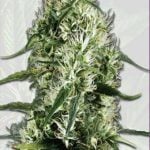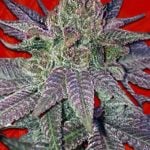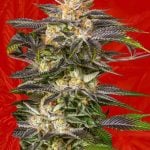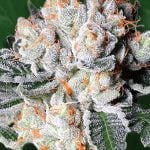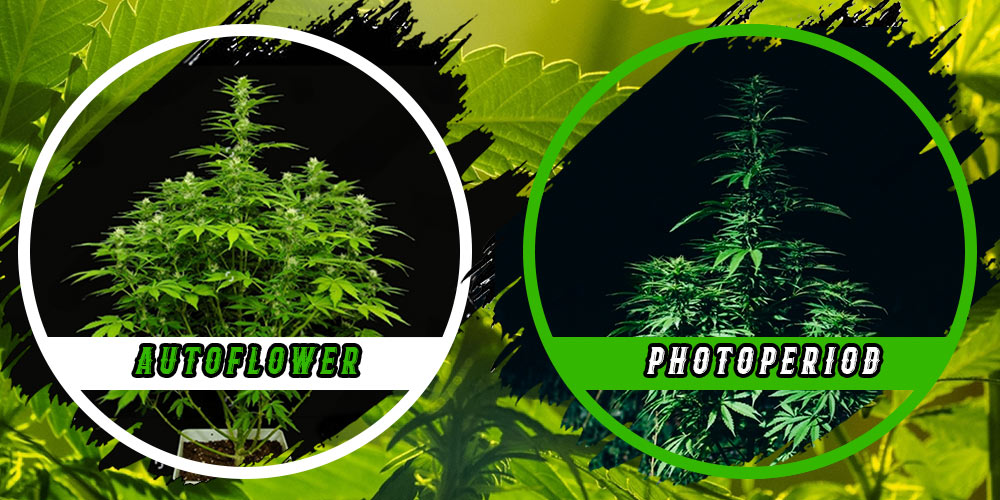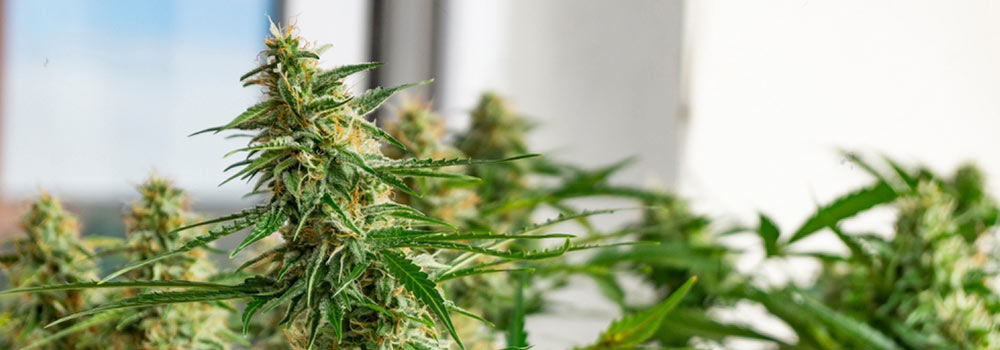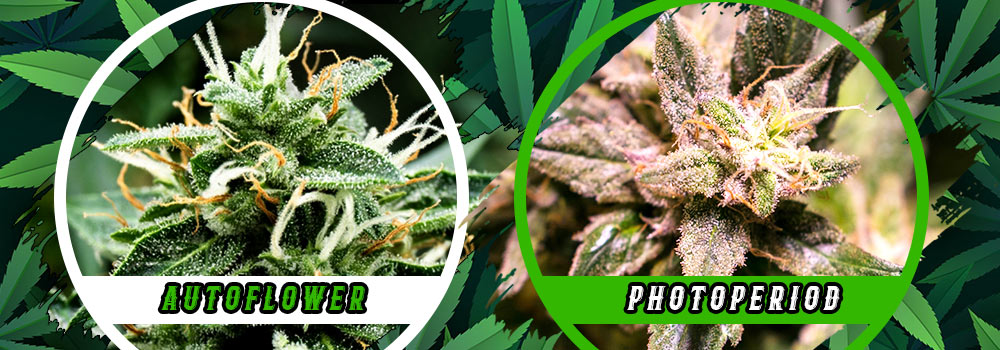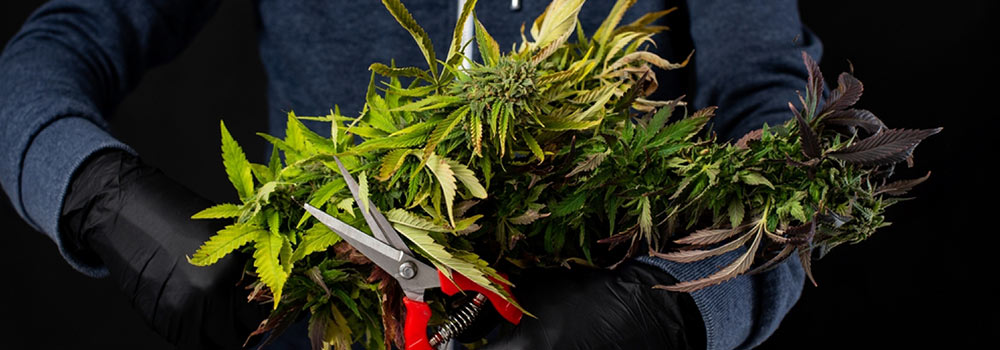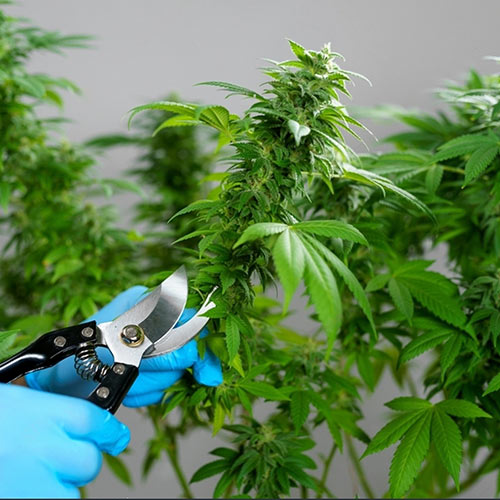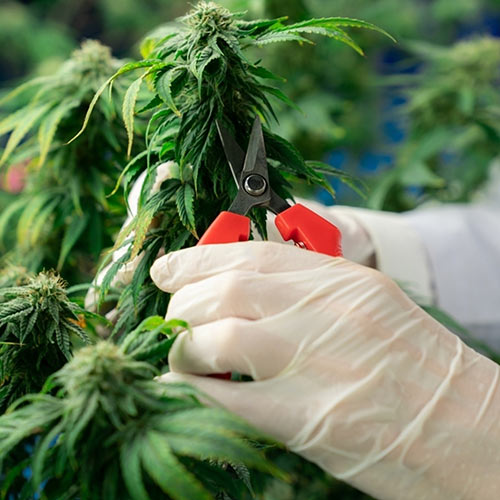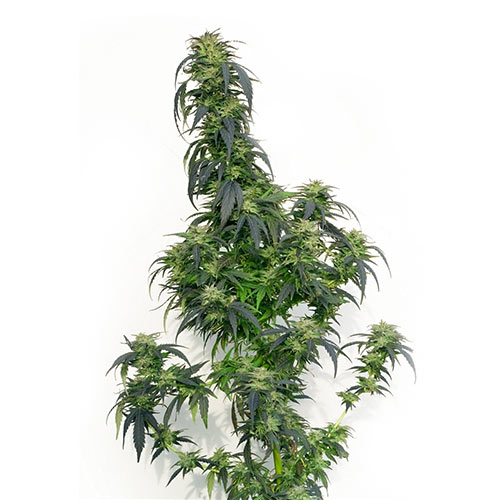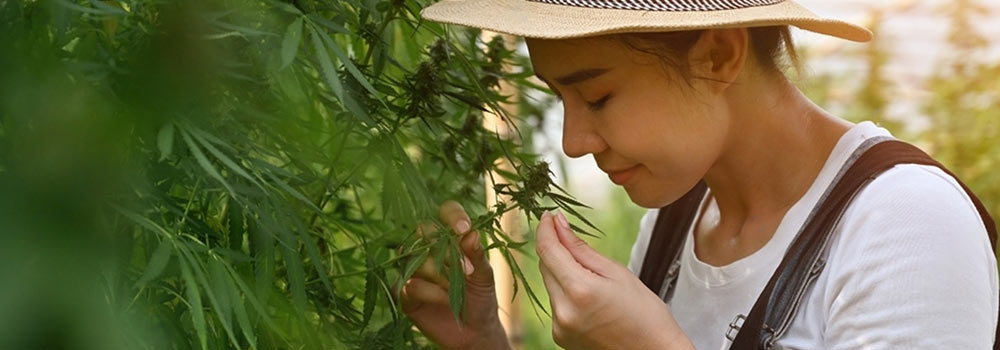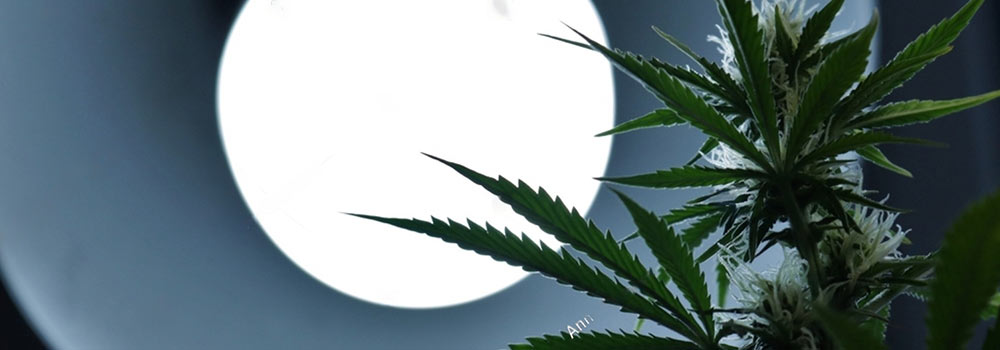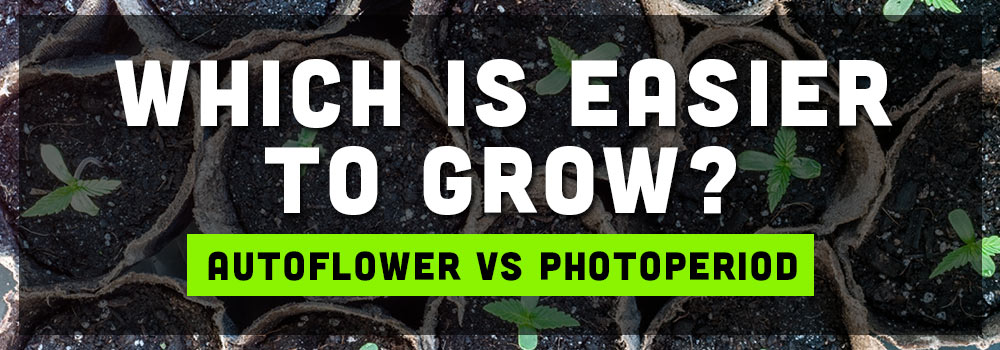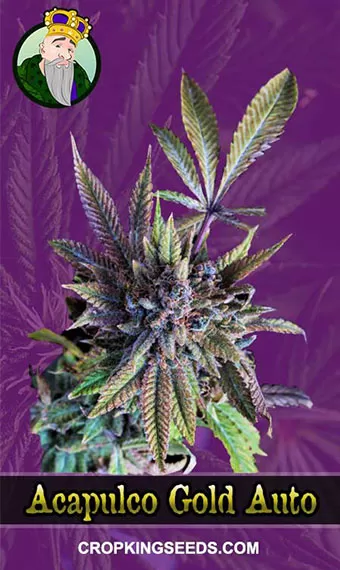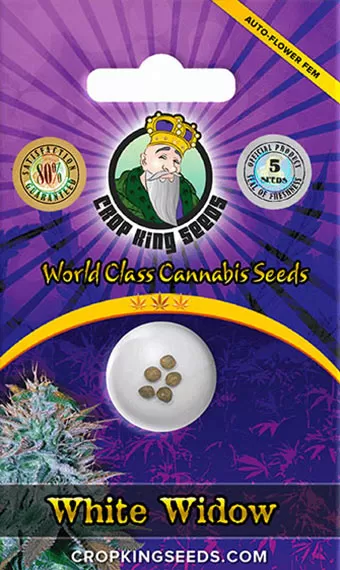There is a constant debate in the cannabis world about the difference between Autoflower vs Photoperiod seeds many experts discuss and tackle the possible harvest time, yields, effects, and ease of growth of both Autoflower vs Photoperiod seeds comparing them and having an understanding of which seeds are the best for every grower. Here in this article we will discuss further about these topics and will make you up to date with the latest findings.
Autoflowering Cannabis Strains
During the early 1940s, a wild strain of hemp called “Ruderalis” was discovered in Russia, and it eventually gave rise to autoflowering cannabis strains. These strains are distinct from “photoperiod” strains, which require specific signals from the sun to start flowering and need special light schedules to produce buds. In contrast, Ruderalis plants begin flowering at 3-4 weeks of age, regardless of environmental factors, and their buds can be harvested within a few months from seed. The short life cycle of Ruderalis allowed it to survive in Russia’s short summers and long winters, although its buds had low THC levels and the plants were small. However, a breeder recognized that the autoflowering capability and short growing period of Ruderalis could benefit hobbyist cannabis growers, so they began breeding Ruderalis plants with photoperiod strains to increase bud potency while retaining autoflowering ability. Today, autoflowering strains, originally known as “Lowryders,” are widely available and produce buds comparable in potency to other cannabis strains due to careful breeding over many generations.
Autoflower vs Photoperiod Cannabis Strains
Autoflowering cannabis strains differ from traditional ones because they don’t require a specific light schedule to begin flowering. Photoperiod strains need at least 12 hours of daily darkness to start budding, and outdoor growers must ensure that their plants are planted in the spring and will finish flowering before winter.
Indoor growers can control the light schedule using a timer to provide longer periods of darkness to induce flowering.
In contrast, autoflowering plants will begin blooming within a few weeks, regardless of the light schedule. This means outdoor auto growers can handle planting at the perfect time or matching the strain with their local time zone. As long as there are 2-3 months of warm, sunny weather, autos can be planted without concern for light schedules.
How Long To Harvest?
Autoflowering
Autoflowering cannabis plants typically have a shorter growing period and are ready for harvest earlier than photoperiod plants. After sprouting, autoflowering plants only go through a brief vegetative stage before transitioning to bud production, which can occur within 2-3 months. Unlike photoperiod plants, autoflowering plants continue to grow taller while buds are forming. However, a few weeks before harvest, they stop growing upwards and focus all their energy on developing dense, heavy buds.
When purchasing auto seeds, breeders can provide an estimated time until harvest. However, it’s worth noting that breeders may give the shortest time frame possible. Some autos can produce better yields and higher potency if left to mature for an extra week or two (up to three weeks) beyond the recommended harvest time.
Photoperiod
These strains typically take longer to reach harvest than autoflowering strains. These strains generally require 3-4+ months to be ready for harvest after sprouting from seed, although the exact time can vary depending on the growth method and strain chosen. Even when grown from seed, photoperiod plants take longer to reach maturity than autoflowering plants, and their yields are often lower. Photoperiod plants require a vegetative stage before flowering and are not well-suited for quick harvests.
Which Yields More?
Autoflowering
The amount of bud produced by autoflowering plants can vary greatly depending on the grow setup, genetics, and experience of the grower. On average, autos can yield up to 4 ounces per plant when properly taken care of, but some growers may only yield 1-2 ounces per plant or less.
Good lighting is crucial for producing high yields, and experienced growers with good genetics and ideal conditions can sometimes yield 6 ounces or more per plant. One of the benefits of growing autos is that their short lifespan allows for multiple harvests per year, increasing the overall yield potential.
Photoperiod
These strains are more responsive to growth techniques 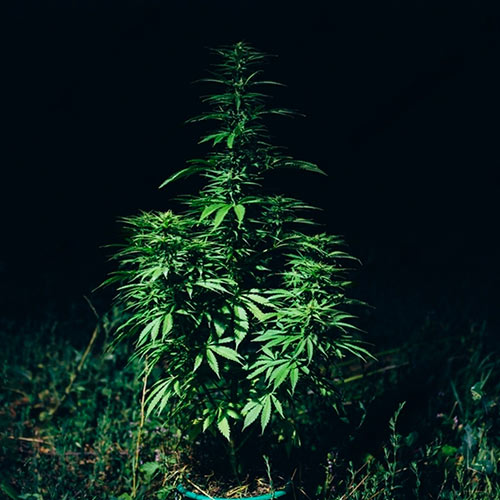
Which is More Potent in Smell and Taste?
Although fewer autoflowering strains are available, their potency is comparable to photoperiod cannabis plants. While autoflowering strains often contain higher levels of CBD due to the presence of Ruderalis plants, which are known for their high CBD content, modern auto strains have been bred to have similar characteristics to photoperiod plants, such as the “Blue Cheese” strain.
Autoflowering strains also have similar smell and taste profiles to their photoperiod counterparts.
The main visual difference is that autoflowering buds tend to have more leaves among the buds, which may require extra care during trimming. However, some photoperiod strains also exhibit this trait, and the extra leaves can help promote bud growth, causing them to swell up more quickly and in less light than photoperiod strains.
Do You Need Lights Scheduling?
Autoflower
Autoflowering strains have an internal countdown that triggers them to start flowering after about 3-4 weeks, which cannot be altered by the grower. They will remain in the flowering stage until it is time for harvest, usually 2-3 months from seed, depending on the specific strain.
Because of this, unlike photoperiod strains, autoflowering plants do not require a specific light schedule to initiate flowering. They can be grown from seed to harvest even with just 12 or 8 hours of light daily, although higher light levels will result in bigger yields.
One advantage of this internal clock is that autoflowering strains can be grown in bright urban environments where photoperiod plants may struggle to bud. They are also useful for warm climates where plants can be grown outside of the normal growing season and can be harvested as early as July.
In contrast, photoperiod plants are typically harvested in mid to late fall.
Photoperiod
To initiate the flowering stage and bud production, photoperiod strains require a 12-12 light schedule, which means 12 hours of light followed by 12 hours of darkness each day. While outdoor photoperiod plants naturally start flowering as days grow shorter in the winter, indoor growers use timers to maintain a 12-12 light schedule until harvest.
During the daily dark period, photoperiod plants must receive complete darkness without interruption. Any exposure to light during this period or too much light overall can cause the plant to produce hermaphrodite flowers or revert to the vegetative stage, preventing bud production. To avoid this, creating a light-proof growing environment indoors when growing photoperiod plants is crucial.
If providing complete darkness during the dark period is impossible, growing an autoflowering strain is recommended. It is not affected by light at night and does not require specific light schedules to initiate or maintain the flowering stage.
Which is Easier to Grow?
Autoflower
Autoflowering strains can be easier to cultivate than photoperiod strains, but they have unique challenges.
One of these challenges is that autos are particularly sensitive during the early stages of growth. If the plant experiences significant issues during this time, it will still begin flowering as scheduled, even if it’s unhealthy.
If an autoflowering plant is stunted due to growing problems, it will produce a smaller yield than initially expected. In the image provided, the autoflowering White Widow plant is sick and stunted after just 2.5 months of growth. Because of its autoflowering nature, the plant will not have the opportunity to recover before it enters the flowering stage. This can be frustrating for growers, as they will need to start from scratch in order to attempt to achieve a bigger harvest.
While autoflowering strains do have their own unique set of challenges, they also have some advantages over other strains. For example, they will continue to produce buds on their internal schedule, regardless of the plant’s overall health. This can be beneficial for growers who are still learning how to cultivate cannabis.
Additionally, autoflowering strains tend to be quite hardy, meaning they will thrive as long as they receive the basic care they need.
Overall, while growing autoflowering strains can be simpler than other strains, growers should still be aware of the potential pitfalls. By providing consistent care and addressing problems quickly, growers can increase their chances of achieving a successful harvest.
Photoperiod
Indoor-grown cannabis plants in the vegetative stage can recover from major growing problems, as growers have control over the length of this stage before switching to the flowering stage. This provides the grower with ample time to address and fix any issues before the plant enters the critical flowering stage.
For novice growers, photoperiod strains may be a better option as they have more control over the growth cycle. During the vegetative stage, these plants are hardy and can withstand a variety of growing issues. With photoperiod strains, growers have the ability to control when the flowering stage begins, which allows them to maximize yields even if mistakes are made.
Once the flowering stage begins, the overall health and structure of the plant become more established. A countdown to harvest begins, similar to autoflowering strains, which is mostly dependent on the particular strain. Although the plant may have an initial stretch of vegetative growth after the light cycle change, growth primarily focuses on the development of larger buds as the plant approaches maturity towards the end of the flowering stage.







